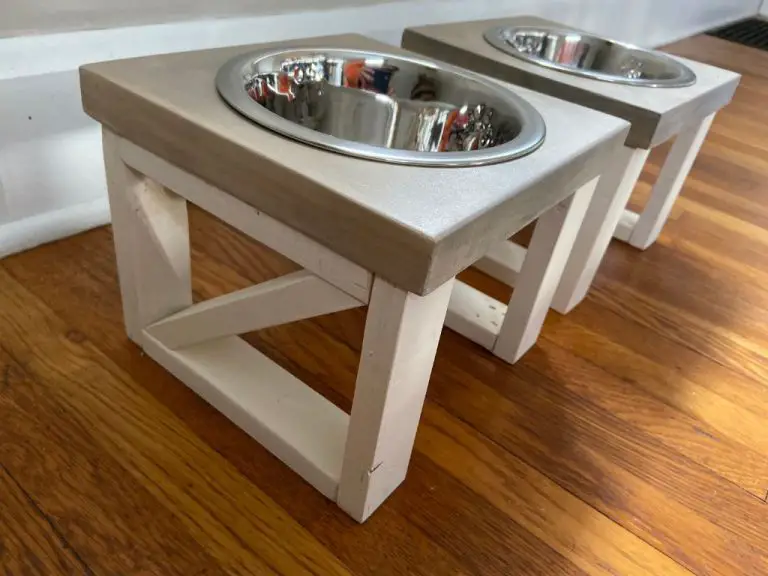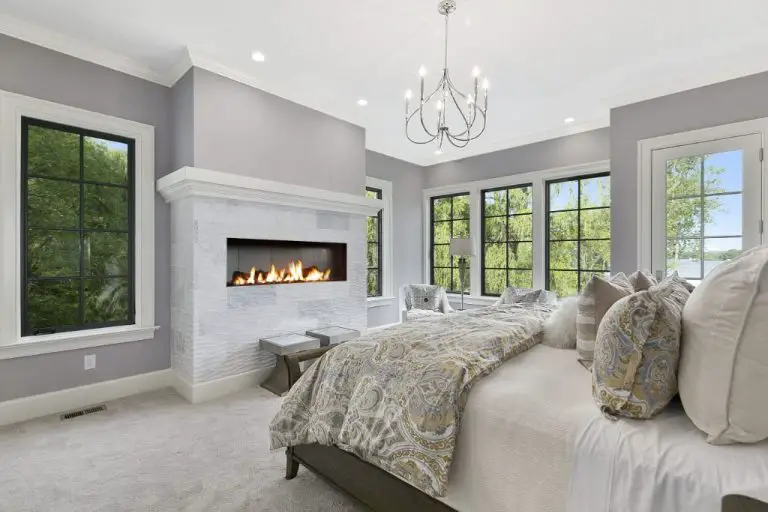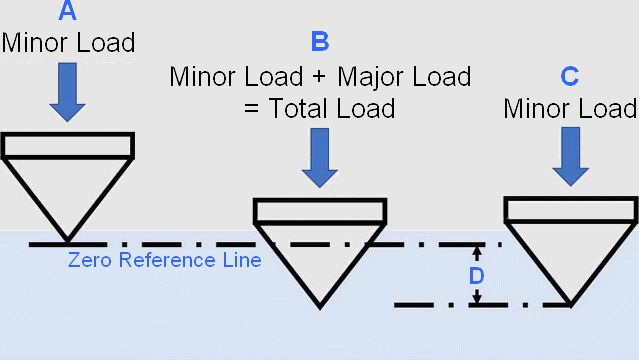What Is The Difference Between A Curtain Rod And A Curtain Pole?
Defining Curtain Rods
Curtain rods are rodlike hardware designed to hold up curtains and drapes. Curtain rods are usually made from metal, though they can also be wood or plastic. The most common metals used are steel, iron, aluminum, and brass (source).
There are many types of curtain rods, including decorative single rods, double or dual rods, concealed rods, traverse rods, tension rods, and cafe curtain rods. Rods come in a range of diameters, usually between 1/4 inch and 1 1/4 inches. Common lengths are 28 to 120 inches. Extenders can be used to extend the rod’s length (source).
Decorative rods add style and can match a room’s decor. Double rods allow different curtains on inner and outer rods. Concealed rods hide within a wall or ceiling. Traverse rods open and close. Tension rods squeeze into openings. Cafe rods hang below the actual window (source).
Defining Curtain Poles
A curtain pole is a long, cylindrical bar that is mounted on a wall or ceiling to hang curtains from. Curtain poles are often made from metal, wood, or plastic and come in various sizes, colors, and designs.
Curtain poles can be straight, curved, or adjustable in length. Some common types of curtain poles include:
- Standard pole – a basic straight pole that attaches to the wall with brackets.
- Bay window pole – an adjustable pole made for bay windows.
- Tension pole – a spring-loaded pole that mounts by pressing against the walls or ceiling without needing brackets.
- Telescopic pole – an adjustable length pole with internal segments that can extend.
Curtain poles range in diameter from around 1 inch up to 3 inches. Larger diameter poles can handle heavier curtains. Lengths commonly range from 28 inches for small windows up to 240 inches for long windows or room dividers.
Decorative finials are often attached to the ends of curtain poles to add visual interest and finish off the installation. Curtain pole kits frequently include the needed mounting brackets and finials.
While basic poles just provide a rod to hang curtains, more advanced systems include pulleys, cords, and rings to open and close curtains smoothly and easily.
Key Differences Between Curtain Rods and Poles
While curtain rods and poles serve a similar purpose of hanging curtains, there are some notable differences between the two in terms of mounting, size, adjustability, and appearance:
Mounting – Curtain rods are usually mounted within the window frame using adjustable brackets, while poles are mounted to the wall around the window opening using fixed brackets (source).
Size – Curtain rods are thin, typically around 1 inch or less in diameter. Poles tend to be thicker, between 2-3 inches in diameter (source).
Adjustability – Rods allow for easy length adjustments, while poles are fixed lengths. However, poles allow for customizing finial placement (source).
Appearance – Rods have a thin, understated look, while poles make a bold decorative statement. Rods come in basic metals and colors, but poles offer ornate wood styles (source).
When to Use a Curtain Rod
Curtain rods are a popular choice for many windows in the home. They work well for standard windows in living rooms, bedrooms, kitchens, and more. Curtain rods allow you to hang lightweight to medium-weight curtains and drapes to decorate and dress up windows.
Curtain rods are commonly used for:
- Standard rectangular windows – Curtain rods span the width of standard vertical windows and allow you to hang curtains or drapes.
- Smaller windows – Shorter curtain rods work well for smaller windows like those in bathrooms or kitchens.
- Bedrooms – Curtain rods are often used in bedrooms to hang lightweight curtains over windows.
- Decoration and style – Curtain rods allow you to add decorative curtains or drapes to windows to match your home’s style.
Overall, curtain rods are a versatile option suitable for most standard windows where you want to hang lightweight to medium weight curtains. They provide an affordable and easy way to add style, privacy, and light control to windows.
When to Use a Curtain Pole
Curtain poles are well-suited for certain window types, rooms, and decorative purposes:
For bay windows or windows with multiple panes, a pole mounted at the top allows the curtains to be drawn back neatly to cover the entire window area. Curtain poles can also accommodate layered or floor-length curtains, which create an elegant look for more formal rooms like dining rooms and living rooms.

Since poles extend all the way from end to end, they work well over wide expanses. This makes them a good choice for large windows, sliding glass doors, and French doors. For small windows, a rod may suffice.
As an decorative accent, curtain poles can coordinate with other finishes in a room, like cabinet hardware and lighting fixtures. Poles come in a variety of styles, from simple metal to carved wood, allowing you to match your home’s aesthetic.
Overall, curtain poles create a polished, seamless look compared to curtain rods. Their flexibility and customization options make them well-suited for certain window configurations and design desires.
Advantages of Curtain Rods
Curtain rods have several advantages over curtain poles when it comes to cost, installation, and aesthetics.
On the cost front, curtain rods are generally more affordable than poles. Basic metal or plastic curtain rods can be purchased for as little as $10-20, while poles often start around $30 and go up from there depending on the material. This makes rods the more budget-friendly option.
Installation of curtain rods is also fairly simple and straightforward. Most rods use brackets that can be mounted to the wall or ceiling with just a drill and a few screws. Poles may require more components and hardware for mounting and adjusting length. With rods, you can easily install them yourself in just a few minutes.
Aesthetically, rods offer more variety and design options. You can find rods in sleek modern styles, ornate antique looks, industrial pipe designs, and more. With poles, the selection is usually limited to traditional wood styles. So rods provide more decorative flexibility to match your room’s style.
Overall, the lower cost, easier installation, and wide range of aesthetics give curtain rods an advantage over poles in many home decor situations.
Disadvantages of Curtain Rods
While curtain rods have their benefits, they also come with some downsides to consider. Two key disadvantages of curtain rods are size limitations and lack of adjustability.
Curtain rods have size constraints based on the hardware and installation method. For example, tension rods that press against the walls can only extend a few feet wide. Meanwhile, mounted rods may be limited by the hardware and supports used for installation. Trying to span excessively wide windows with a single curtain rod often results in sagging or bending.
Adjustability is another downside of curtain rods. Once installed, the length and height often cannot be modified easily. To change the length, the entire rod needs to be removed and replaced. The fixed nature limits flexibility if window or room layouts change in the future.
In contrast, other systems like curtain tracks allow for easier adjustments, extensions, and flexibility after initial installation. So those seeking maximum customization may find curtain rods too static and rigid for their needs.
Advantages of Curtain Poles
Curtain poles offer several advantages over curtain rods. Firstly, curtain poles allow for more adjustability and flexibility with hanging curtains. The brackets on curtain poles can slide across the pole to widen or tighten curtain spacing as needed. This makes it easy to center curtains over a window or doorway for optimal coverage. Poles are also extendable, with two interlocking sections that allow them to be cut to size for a perfect fit.
Curtain poles come in a wider variety of styles and designs compared to basic curtain rods. There are elegant ornate poles, modern sleek poles, crystal-adorned poles, and more to match any room’s décor. The hardware options are also more varied, with finials, rings, holdbacks, and medallions available to dress up the poles.
With this abundance of style options, curtains poles have an aesthetic appeal that basic rods lack. They appear more upscale and bring an air of sophistication to a room’s design. The decorative pole hardware coordinates with the curtain style and draw focus to the window as a focal point. This creates a put-together, custom look that is difficult to achieve with standard curtain rods.
Source: https://www.direct-fabrics.co.uk/blog/curtain-poles-vs-tracks-best-for-window-treatment/
Disadvantages of Curtain Poles
Although curtain poles offer simplicity and elegance, they do have some downsides to consider:
Cost – Curtain poles can be more expensive than basic curtain rods. Wooden poles in particular can cost quite a bit more due to the material and craftsmanship involved. Metal poles are more affordable but still cost more than most basic curtain rods.
Installation challenges – Installing curtain poles often requires precise measurement, drilling, and bracketing to the wall or ceiling. This can be tricky to DIY compared to simple spring rod installation. Hiring a professional can add cost.
Limited adjustments – Curtain poles don’t allow for easy length adjustments. Once cut, curtains are a fixed length. With rods, you can simply re-gather curtains to adjust.
Weight limitations – Heavy drapes and blackout liners can sometimes exceed the weight capacity of some curtain poles, causing sagging issues. Rods are often rated for more weight.
Final Recommendations
When choosing between a curtain rod and a curtain pole, there are a few key factors to consider:
Curtain rods are generally better for:
- Lightweight curtains
- Rented or temporary housing
- Smaller windows
- Budget-friendly option
Curtain poles tend to be preferable when:
- Hanging heavy curtains like blackout or layered curtains
- Wanting a built-in look for large windows
- Seeking greater stability and durability
- Going for a more polished, high-end aesthetic
In summary, curtain rods offer an affordable and lightweight option that’s good for smaller spaces and rental properties. But for larger windows and a more integrated look, curtain poles provide sturdiness and sophistication. Consider your needs, window size, budget and decor goals when deciding.




